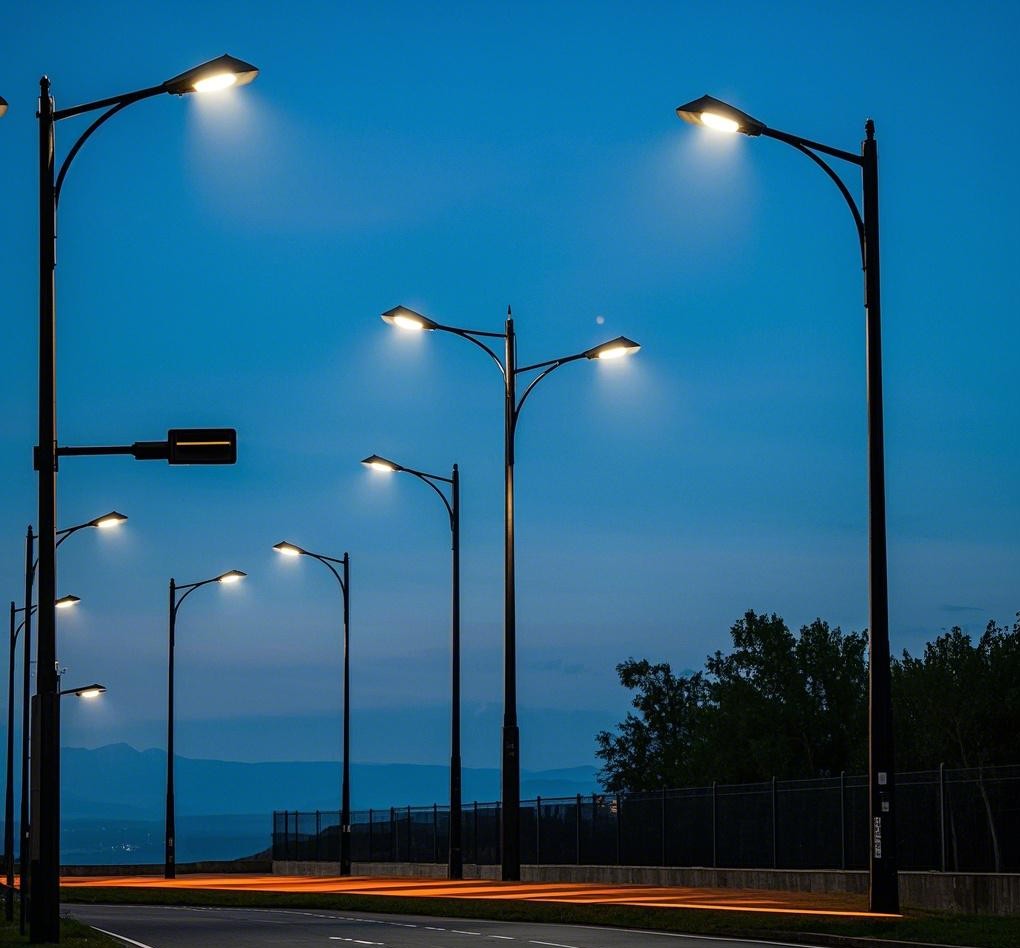The high efficacy of LED outdoor street lights is the core factor in achieving energy-saving goals. Efficacy refers to the efficiency with which a light source converts electrical energy into light energy, measured in lumens per watt (lm/W). High efficacy means that LED street lights can output more luminous flux with the same electrical input.
Traditional high-pressure sodium lamps have an efficacy of about 80-120 lm/W, while modern LED street lights typically achieve 150-200 lm/W. For example, a 150W LED street light with an efficacy increase from 100 lm/W to 150 lm/W will see its luminous flux rise from 15,000 lumens to 22,500 lumens. This allows for significantly reduced power requirements while maintaining the same lighting level.
High-efficacy LED street lights directly lower electricity consumption by reducing energy loss. In practical applications, when combined with intelligent dimming control systems, LED street lights can automatically adjust brightness based on ambient light levels, further optimizing energy use. This dual energy-saving characteristic makes LED street lights the preferred solution for urban lighting energy-saving upgrades.
As LED technology continues to advance, efficacy is still improving. In the future, LED street lights with even higher efficacy will contribute more to urban energy conservation and emission reduction while ensuring lighting quality.
Post time: Mar-06-2025

